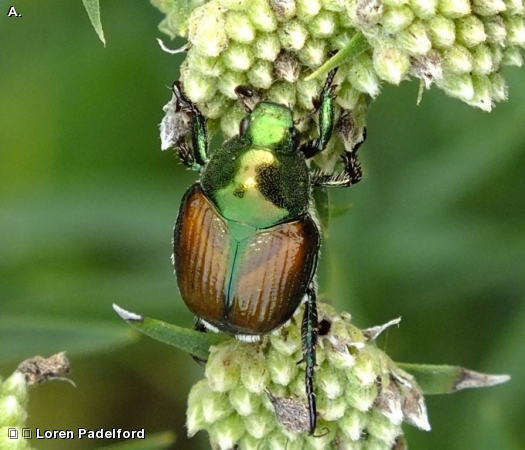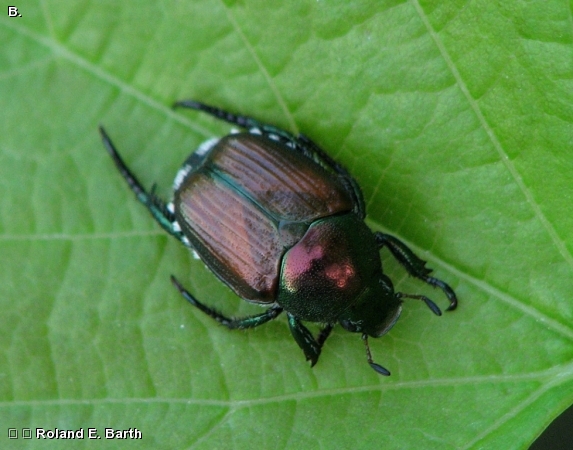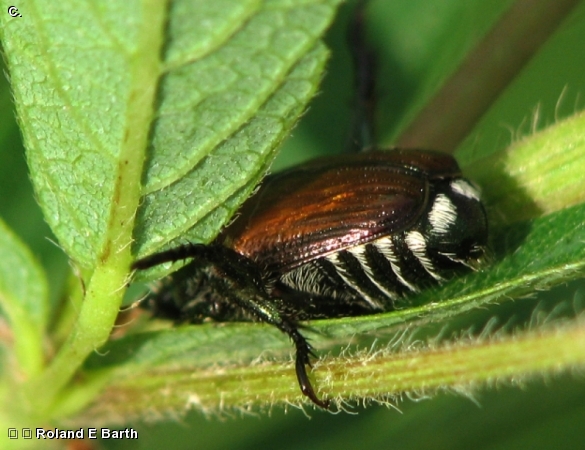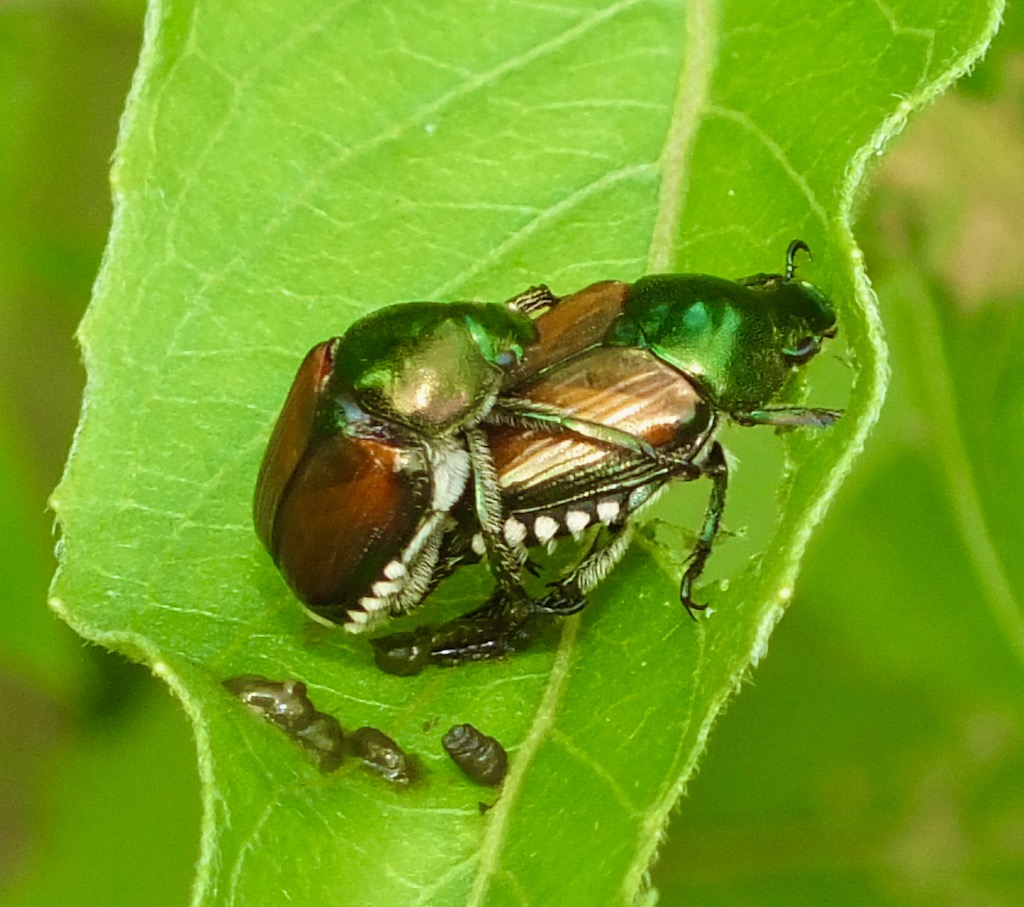
The adult is an attractive and broadly oval beetle, 1/3 to 1/2 inch long and about 1/4 inch wide. It is generally metallic green, with bronze or coppery-brown wing covers that do not completely cover the abdomen. The five patches of white hairs on each side of the abdomen, and one pair on the last abdominal segment distinguish this beetle from all other similar looking ones.
Adult Japanese beetles feed on foliage, flowers, and fruits. The Japanese beetle feeds on more than 300 species of plants. This beetle is native to Japan and Northern China. It was first reported in North America in 1916, the Japanese beetle now occurs in over 20 states from southern Maine southward into Georgia and westward into Kentucky, Illinois, Michigan, and Missouri, Iowa and Nebraska.
The Japanese beetle is a widespread and destructive pest of turf, landscape, and ornamental plants in the United States. It is also a pest of several fruit, garden, and field crops, and has a total host range of more than 300 plant species. Adult Japanese beetles feed on foliage, flowers, and fruits. Leaves are typically skeletonized or left with only a tough network of veins. The larvae which are commonly known as white grubs, primarily feed on roots of grasses often destroying turf in lawns, parks, and golf courses.
Disclaimer: The content of NatureSearch is provided by dedicated volunteer Naturalists of Fontenelle Forest who strive to provide the most accurate information available. Contributors of the images retain their copyrights. The point of contact for this page is:Eric Scholar



